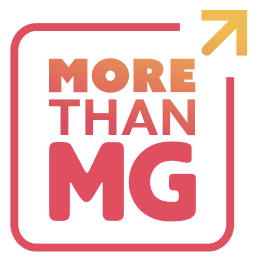Transcript
Hi, I am Dr. Liz Plowman.
Today I’m going to talk to you about why I believe movement is important for people living with myasthenia gravis, including me.
People living with MG are just like everybody else in the respect that movement and activity is important for general health. People with MG or people without MG are just as susceptible to any of the major chronic health conditions—the number one being heart disease in the United States.
Staying active and regularly moving is one of the best preventative methods that we have against heart disease. That is something that is so important. Also with MG, the risk of muscle atrophy and deconditioning is very, very real, especially with decreased movement. Kind of the more that you can move in a good and healthy way, and in a way that is in the context of myasthenia—staying below that fatigue threshold, but still moving—can help to prevent deconditioning and atrophy.
Then also, we have to live lives. We have to perform our just normal activities of daily living: showering, dressing, cooking, eating, all of the -ings. We have to do those things. Then there’s the activities that give us joy, and all of it requires movement to some degree. Having the ability to do that really helps to improve the quality of life.
There are lots of benefits to exercise, movement, and activity in someone with MG. The most kind of top-of-the-line and obvious one is that you are maintaining good muscle tone and maintaining good stability, which leads to better balance, better safety, decreased fall risk, decreased risk of injury. Also helping to prevent atrophy, deconditioning. It also helps prevent any health issues that come from atrophy and deconditioning such as heart and lung issues. Regular movement in someone with MG—but anyone also—can help maintain a good, healthy blood pressure and good heart and lung health.
The biggest challenge that people with MG would face with exercise is knowing how to stay underneath that fatigue threshold. With myasthenia, too much repetitive movement or overexerting can increase symptoms. So, that is something that we do want to stay away from.
There’s a lot of fear when it comes to movement and to exercise for someone with myasthenia, especially if they have had an exacerbation or even a crisis before because certainly we want to keep them away from that. That idea that if I overexert, I could potentially go into an exacerbation, go into a crisis—that leads to a lot of fear of movement. It’s kind of safer to, “I’m not going to do anything.” I would say that’s a big challenge.
That’s one thing that I believe in working on is that education and knowing one’s own fatigue signs, and listening to the body, and being able to move, but in such a way that stays under that fatigue threshold, is so important.
However, that doesn’t mean that all movement and physical activity is off the table, is out of the question. The biggest challenge is one: kind of understanding that not only is movement and activity good for me, it is safe when performed correctly, and my biggest recommendation on that is under the guidance of a medical professional who is trained.
Beyond that, there are emotional benefits of being able to move as well. So a lot of people find enjoyment from exercise or a movement activity they like doing. When I say “exercise,” a lot of people have a preconception about what that is, too. “Exercise” to some people implies, “I have to be in the gym pumping iron, breaking a sweat,” but really anything that’s movement is exercise. That could be walking the dog. That could be dancing. That could be yoga. That could be tai chi. It could be swimming. There are so many things that fall under the auspice of movement and activity. It can be a good stress-reliever, a good outlet. Then also, especially for someone with MG, where movement is absolutely affected, being able to maintain some sort of physical activity and engage in those fun activities can bring a sense of enjoyment. I think that’s absolutely important to keep in mind and an important reason to stay moving and stay active. I hope you found this video helpful. If you have any questions about myasthenia gravis or physical therapy, please talk to your health care provider.

